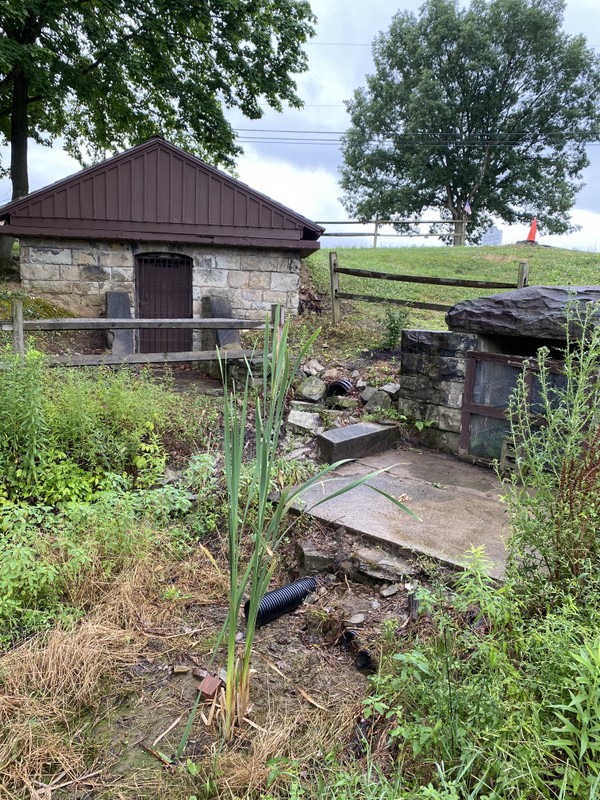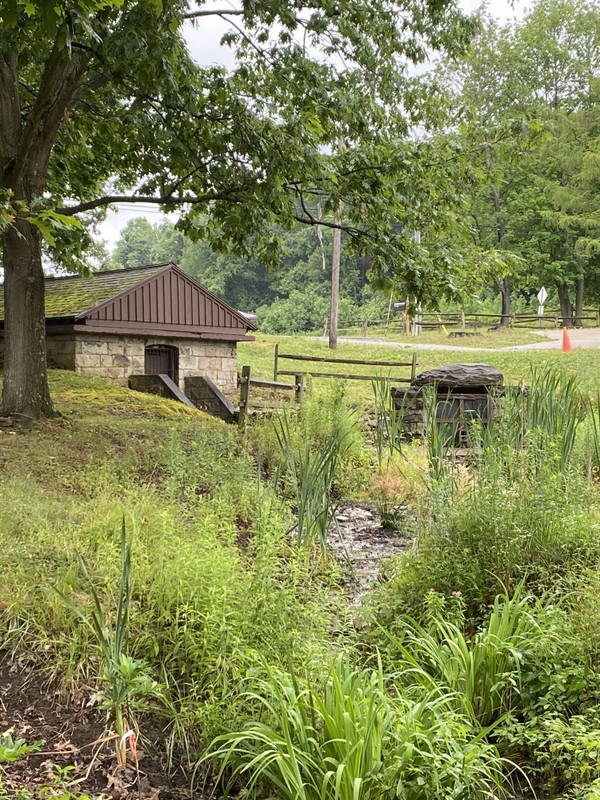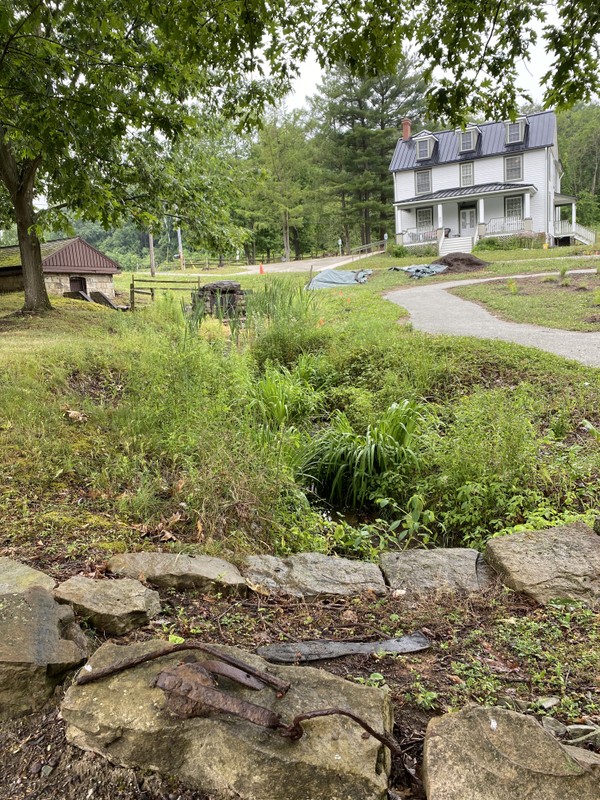Mier’s Spring/Steel Springhouse
Introduction
Text-to-speech Audio
Jacob Mier was the first to settle on the land that would later be called Hanna’s Town. Mier established a waystation at the spring in the early 1760s. However, it would not be until the Treaty of Fort Stanwix was signed in 1768 that Europeans could settle this far west. After the Treaty of Fort Stanwix, Robert Hanna purchased the land and established Hanna’s Town in 1769. Hanna had three springs that played an essential role in his building. The Mier’s Spring is the only one still active. The milk house beside the spring belonged to the Steel family and was not present during the 18th century. The small building would be cool and used like a refrigerator.
Images
The plaque on the side of the Spring

The Spring and the Steel Milk-House

The Spring and the Steel Milk-House

The Spring and Milk-house with the Steel house in the background

Backstory and Context
Text-to-speech Audio
After extensive archaeological research and digs, it was concluded that settlements near these springs may be prehistoric. Native Americans found this land valuable because of the plentiful flowing water which was sometimes difficult to come by. They would have to fetch the water themselves in order to use it for anything. With an easily accessible water source, the settlement would have had an easier time growing and populating, making it overall successful.
When the Treaty of Stanwix was signed in 1768, the New Purchase ceded Native American territory to the Penn family which expanded Pennsylvania's boundaries. Robert Hanna purchased the Mier’s Spring because of its strategic location between Fort Ligonier and Fort Pitt. The resources that came with Mier’s Spring were also a draw for settlers. Colonists at this time found fresh and natural running water to be a big deciding factor in the quality of life of the people and overall growth.
The Steel family thought of a more advanced way to utilize the spring while living on the land. They decided to build a spring house, which was used as a place to store perishables and was used as an early refrigerator. The family would also gather water for cooking and washing clothes. This building could also be used as a milk house on the Steel family homestead.
Sources
Westmoreland County Historical Society. 2019. “Hanna’s Town Tour Manual”. Westmoreland County Historical Society.
